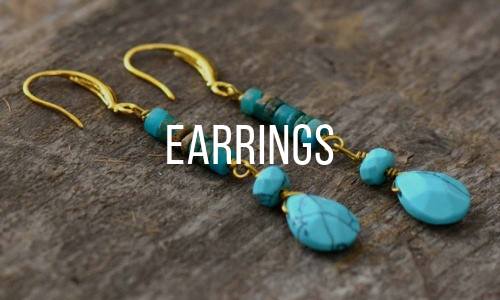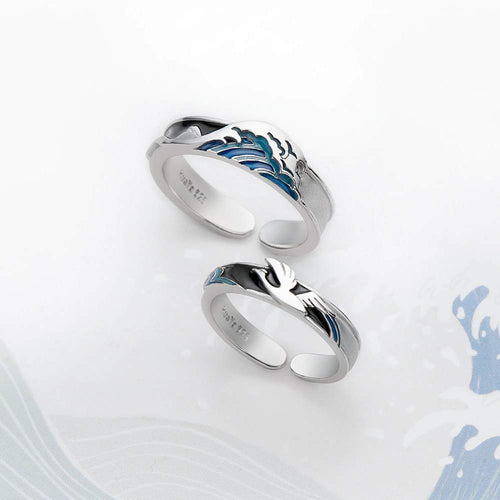Crystal bracelets are not only beautiful to wear, but can also be a true companion on your wellness and healing journey.
One question our crystal bracelet gurus here at Zen Crafthouse often get asked is whether it's safe to wear your crystal bracelets in water.
So in our helpful article today, we will find out the definitive answer.
Whether you are thinking of swimming or bathing with your crystal bracelet on, or even if you are wondering what happens if you decide to do a spot of washing up, we have got you covered!
Before we get into the details, let’s find out the mini answer first.
It’s ok in general to wear your crystal bracelet in water for short periods of time, depending on crystal properties, porosity, metal components, and bracelet materials. Prolonged water exposure can include changes in energetic properties, color, structural integrity, and cord weakening.
Ok so now we have got the short answer in place, let’s find out more about wearing crystal bracelets in water by finding out about their properties.
The Nature of Crystals

Crystals are known for their unique energetic properties, which vary from stone to stone.
Some crystals are porous and can absorb water, potentially altering their properties or causing damage over time.
So It's essential to understand the composition of your crystal bracelet before deciding whether to expose it to water.
Factors to Consider:
-
Crystal Type:Crystals are diverse in their characteristics. Some are naturally morewater-resistant due to their mineral composition, while others may be prone to degradation when exposed to moisture for extended periods. For instance, some crystals like selenite and malachite are relatively delicate and can be adversely affected by moisture. ( we will look at these in more depth later on).
-
Porosity: Crystals vary in porosity, which affects their ability to absorb water. Porous crystals may become compromised when submerged in water for extended periods, potentially altering their color, structure, and energetic properties.
-
Metal Components:If your crystal bracelet includes metal components, such as clasps or decorative elements, these metals might tarnish or corrode when exposed to water for long periods
Understanding the Dynamics: While some crystal bracelets may tolerate brief encounters with water, prolonged exposure introduces new challenges and considerations. The properties of crystals, the materials used in the bracelet's construction, and the nature of water itself all play roles in determining the outcome of extended water use.
-
Bracelet Materials: The type of cord or material used in the bracelet's construction influences its water resistance. Elastic cords may weaken when exposed to water over time, whereas other materials like nylon or silicone cords could fare better.
So what else may happen if your crystal bracelet is in prolonged contact with water?
Read on to discover more.
Potential Effects of Prolonged Water Exposure
-
Energetic Maintenance:Prolonged water exposure might alter the energy of the crystals, potentially diminishing their metaphysical properties. Regular cleansing and recharging rituals might become necessary to restore the crystals' energies.
-
Color and Luster Changes:Prolonged water exposure can cause certain crystals to lose their vibrancy or develop a muted appearance due to water seeping into their pores.
-
Structural Integrity: Porous crystals might develop cracks, fractures, or weakening over time due to the expansion and contraction caused by water absorption.
-
Cord Weakening: Elastic cords used in many crystal bracelets may deteriorate with prolonged water exposure, leading to potential breakage.

So are there any crystals that are more water-resistant than others?
Water-resistant crystals
Aquamarine: This blue-green gem is part of the beryl family and is known for its durability and resistance to water. We love this aquamarine bracelet here at Zen Crafthouse!
Moonstone: With its captivating adularescence, moonstone is usually water-resistant and can be used in various types of jewelry.
Labradorite: Known for its iridescence, labradorite is typically water-resistant and can retain its luster even when exposed to moisture.
Citrine: This vibrant yellow or orange quartz is often water-resistant and suitable for various jewelry pieces.
Lapis Lazuli: Often used in crystal bracelets lapis lazuli is a deep blue stone that can handle exposure to water quite well.
Agate: Agates come in a range of colors and patterns and are generally durable and water-resistant for bracelets and other crystal jewelry.
Tourmaline: Many varieties of tourmaline are water-resistant, making them suitable for jewelry that might come into contact with moisture.
Garnet: This gemstone, available in different colors, is usually resistant to water and can be used in jewelry.
Aventurine: This quartz variety, available in beautiful hues of green and blue, is relatively water-resistant and popular in all types of crystal jewelry. Wear this aventurine bracelet and embrace your inner traveler!
Jade: Jade is known for its toughness and resistance to chipping, making it a good choice for jewelry that might be exposed to water.
So are there any crystals that might be in your healing or meditation crystal bracelet that are less resistant to water?
Crystals that are less water resistant
Yes, there are some crystals that are not as water resistant and might be prone to damage or alteration when exposed to water or moisture for extended periods.
Here are a few examples:
-
Selenite: Selenite is a delicate crystal that can be easily damaged by water. It has a tendency to dissolve or become cloudy when exposed to moisture.
-
Malachite: This green stone is sensitive to water and can lose its vibrant color or develop a dull appearance when soaked.
-
Turquoise: While turquoise is often used in jewelry, it can absorb water and oils, leading to changes in color and texture over time.
-
Pyrite: Also known as "fool's gold," pyrite can rust and degrade when exposed to water or moisture.
-
Opal:Opals are sensitive to changes in humidity and moisture, which can cause them to crack or lose their play of color.
-
Angelite: This pale blue stone can deteriorate and become discolored when in contact with water or moisture.
Can I bath or shower wearing a crystal bracelet?
Showering with a crystal bracelet is generally safe, but it's important to exercise caution and consider the type of crystal bracelet you are wearing.
As we discovered above, some crystals are more sensitive to water and may dissolve or become damaged over time.
Household Cleaning And Wearing Crystal Bracelets
Wearing crystal jewelry while doing your weekly spruce-up could cause damage to both the crystals and the jewelry itself.
Along with water, cleaning agents, chemicals, and abrasive materials commonly used during cleaning can react adversely with the delicate surface of crystals, leading to discoloration, scratches, or even structural changes.
Also if you are indulging in some serious scrubbing while cleaning it might result in breakage or loss of gemstones.
To preserve the beauty and energetic properties of your crystal jewelry, it's advisable to remove it before hitting the cleaning!
Wearing crystal bracelets while swimming
While the allure of wearing a crystal bracelet while swimming might be strong, it's important to be aware of the potential pitfalls.
Crystals are sensitive to various elements, and prolonged exposure to chlorinated or salt water can lead to discoloration, deterioration, or even breakage of the crystals.
The abrasive nature of sand and rocks in natural bodies of water could also cause damage.
There's also a risk of the bracelet becoming loose or slipping off your wrist in the water.
And, as we mentioned earlier, if the bracelet has metal components, it might corrode or tarnish when exposed to water.
So, before you dive in wearing your crystal bracelet you might want to consider these points!
Top tips for wearing crystal bracelets in water
So how do we make sure we protect our crystal bracelets from water?
-
Short and Occasional Exposure: If your handcrafted crystal bracelet is of exceptional quality and constructed with study materials, it may tolerate short and occasional exposure to water. Brief activities like washing hands or taking a quick dip might not pose significant risks.
-
Gentle Cleaning: Should your bracelet get wet, gently pat it dry using a soft cloth to prevent water from lingering on the surface. Avoid using harsh chemicals or abrasive materials that could harm the crystals or the bracelet's components.
-
Mindful Activities:Engage in mindful activities while wearing your handcrafted crystal bracelet in water. Avoid high-impact or rigorous activities that might increase the risk of damage.
-
Monitoring and Maintenance:Regularly inspect your bracelet for any signs of wear, damage, or changes in appearance.
Can I Wear My Crystal Bracelets In Water? - To end
So we hope that's given you the lowdown on wearing your crystal bracelets in water, where, what, and how!
Don't forget to browse our extensive collection of the most gorgeous crystal bracelets in our storefor all your healing, positive energy, and rituals! But make sure you follow our top tips if you are a water baby to keep your crystal bracelets in fabulous condition. 









Laura Specie
December 17, 2023
I had one of my anxiety bracelets to break. Never had it in water any extended period of time. Showers took it off. Doing dishes, it was once in a while in contact with water but not submerged. Have not had a chance to replace it yet. I am afraid I will be left with just the black one as the other one is beginning to fray. I do LOVE the bracelets!